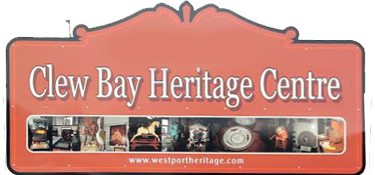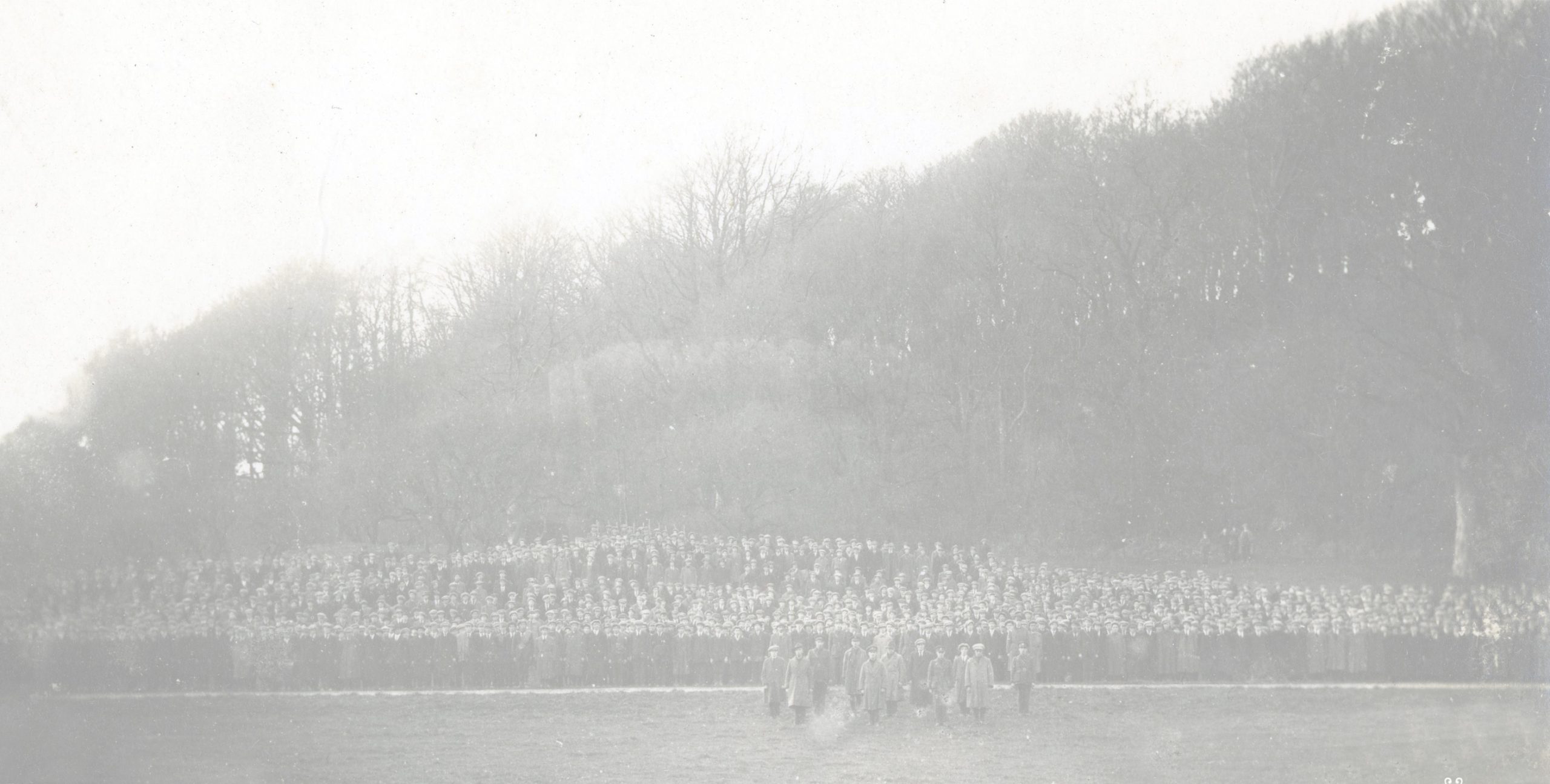My dear Johnnie,
Here at last are the few notes which I took down from Daddy about two years ago. At that time, they looked complete enough as they were intended for Michael Kilroy who knew the background to the events and the district in which they took place.
You not being, perhaps, so well versed in the activities of the 2nd Battle West Mayo Brigade may find them to phrase. If you do so you could get in touch with me (Phone 76831 – Exten 22) mentioning any points on wish you require amplification and I’ll do my best to re-jog Daddy’s memory.
Many of the dates are, as you can see, rather vague. Daddy could not do any better with his memory. Taken in conjunction with material in the Bureau already it should not, however, be different for the historian to achieve a higher exactness.
Give me regards to Tillie and the family. I hope to see you sometime in the future.
With apologies for the long delay in finishing this material, I owe.
Yours faithfully
Seán Connolly
J. McCoy word.,
Military History Bueau,
26 Westland Row
Dublin.
Shortly after the formation of the Irish Volunteers, I joined its ranks in Tiernaur, Newport, Co. Mayo. Robert Spicer, an ex-British Army man, was drilling us.
I did not spend long with the Tiernaur group as I left the district for work and for the next few years I was training with the groups in Knockcroghery, Roscommon and Castlerea. On the outbreak of the Great Was I went with the National Volunteers.
1916 came without causing any great changes in our district.
1917 saw me enrolled in the IRA in Knockcroghery. Paddy Moran from Tiernaur joined with me. We assisted as well as we could in the election campaigns of Court Plunkett and Joe McGuinness. Mostly we carried banners and helped swell the crowds and the cheers at the election meeting. I had been in Sinn Féin since 1916.
By 1918 I was back again in Tiernaur where I joined the local branches of Sinn Féin and the IRA. Soon after I was made section Commander and promoted from there to 2nd Lieut., to Lieut., and in 1919 to Captain. The former Captain, Captain Mc McMenamin – having been put on the 2nd Batt. West Mayo Brigade.
To meet the 1918 threat of Conscription all firearms in the parish were requisitioned, pikes were made by Boyles and Kilroy’s, and food (mostly potatoes and oatmeal cakes) were hidden in caves and ditches on the mountains. The requisitioning of arms gave us one Mauser rifle – presented by Mr Patrick Moran, the teacher for use in the training of the Company – and quite a few shot-guns.
The Sinn Féin candidates in the 1918 elections were assisted in every way.
1919 was spent mostly in drilling and organising. Training and preparation were intensified further in 1920. Arms dumps were made. Earthenware pipes were procured for holding oiled guns underground and in dry banks safe from air and water. This was all done on foot of orders and directions from H.Q.
In 1920 also raids were made for arms. I took part under Capt. McMenamin – in a raid on Stoney’s Castle. The raid was by night and was very successful. Shooting was not necessary. The haul included some swords and guns. A raid, in which I did not take part, on God’s of Rockfleet gave us another rifle.
Shortly after Mulranny barracks was evacuated it was burnt down on orders from Batln. H.Q in Newport.
Later in 1920, I remember Michael Kilroy in Hobins of Derrycouldrin making bell-tents so that the men could go under canvas when things got going. Moulds for pellets, and pellets, were being made. One night we were making them in Lavelle’s of Knockbridge when the house nearest to us was raided by the British.
We collected a heavy duck gun from Mc Nulty’s of Cahreenbreae; it belonged to an English visitor. I remember that Captain J. Moran – R.I.P. – had great hopes for it; but it was very, very heavy.
When in 1921 Michael McMenamin was arrested in Tiernaur, I became Vice. Commandant.
On the formation of the Column, I sought Volunteers in Tiernaur. There were volunteers in plenty but due to the scarcity of arms, I could only take five. The men finally selected were:
Laurence Mc Govern, James Moran, Patrick Molloy, Patrick Mc Loughlin, and Michael Brown.
Between the six of us we had 3 rifles, 3 shotguns, 3 revolvers and a few bombs; and 100 rounds for each gun.
The volunteering took place at a parade early in 1921.
The Column
From the Newport area Paddy O’ Malley, Ned Murray and Josie Doherty – Batt. O.C. – came to the Column.
Kilmeena supplied “Black” Jim Browne and “Red” Jim Browne.
Mick Gallagher , Jim Kelly and Paddy Kelly represented the half – parish of Brockagh.
Jim Clinton and Willy Burke – both of Newport – were in Prison when the Column was formed.
Arrests in Achill and Ballycroy prevented men in those areas from joining the Column.
At Furness we met Michael Kilroy, Ned Moore, and their part of the Column. We set out again making home-made bombs and testing them out on the face of the mountains. We remained a while in Furness taking up ambush positions at any hint of enemy approaching.
16th / 17th March we prepared for an ambush on Westport Rd. outside Newport. On signal of approach of Military escort. There were no military. On another occasion we spent many (word) hours at Burrishoole.
While we were waiting at Burrishoole we got word of the ambush at Tourmakeady. On receipt of this information we decided to go to the support of the IRA there. We sat off on a route march – from Burrishoole to Furness to Newport (which town we took over for some time as we were collecting supplies necessary for the march), to Glenmask. At Glenmask we found some for our Brigade Column who had arrived there before us.
The fight in Tourmakeady was over. We returned back towards Westport. Near Westport, Patrick Marley – RIP – was shot.
Westport was occupied that night by volunteers. The “Auxies” and police stayed as quiet as mice, seemingly thinking it better not to poke their noses out of their hotels and barracks.
A policeman was shot in Newport about this time, A day or two after the occupation of Westport the Kilmeena Ambush occurred. We were waiting for the police at Kilmeena and a long wait we had too! But they came at last. Michael Kilroy held his ground well that day and fought with conspicuous bravery.
Two Castlebar men – Swift and Hughes – were wounded. They were carried on horseback to Skerdagh. Jim Moran and I went home with permission, and arrived back that ………….cut off.
Jimmy Kanes’ house where his wife was staying for the time being. As we were leaving Kanes early next morning, Jimmy asked us to give of the fighting for the Summer or we’d all be killed or captured. Michael replied with a twinkle in his eye. “It might be in Jimmy Kane’s back garden we’d have the next fight!”. He was almost a prophet.
We made our way back to Mc Donnells of Skerdagh. Just across a few fields from Kane’s. The two wounded were in the house being attended by Mr. Madden. We weren’t long back when we heard the sound of shooting in the village of Sherdagh. Michael Kilroy and I went down to interpret the enemy; Jim Moran took the wounded men in the hills to safety.
Michael and I made our way carefully. As soon as he got a view of the enemy, he whispered to me to watch out and drop on the command.
Suddenly he said drop “Drop” and as we went to earth a bullet ploughed its way into the clay behind us. We had hardly reached the ground when one of the enemy was heard to exult – “That was a great shot, first thing in the morning and I got a man”.
We both opened effective fire and the enemy raced for cover. We began to retreat slowly, covering one another alternatively as we went towards the top of the brae to our rear. We were joined at the top by Tom Kitterick, Dr. Madden and Johnnie Gibbons. We kept up the fight until about 12.30pm. It had started about 2.30am.
That night we returned to Skerdagh to the scene of the fight and, crossing the river, made our way up to Glenisland.
After Skerdagh Drummin Barracks was burned, Carrowkenney ambush was fought and the Column was regrouped. Soon afterwards, the Column began to break up and men went back to their own areas to operate there, to avoid arrest and to secure the safety of the areas that had been captured.
The break-up was at Owenwee. We of the 2nd Battn. Crossed Croagh Patrick and to Prospect with the intension of resting there. Some of the men went to bed in Prospect.
About three o clock in the morning, I went for a walk with another volunteer and a man from the Prospect district. We found the enemy converging on Prospect. They were coming on horseback and afoot. We hurried back to the village where I woke the crew. We took cover in bushes, gardens and drains – anywhere we could. And just in time too!
The enemy were searching the houses, our view had vacated, in no time at all. Only one man was captured. He was captured in a house. He pretended to be living there. He got a hand day’s work knocking down turf stacks at the point of a gun. The turf stacks might be hiding some of our men.
We lay low all day. The enemy were here, there and everywhere – all around us. And even above us. There were planes circling the reek keeping a sharp look-out for us.
That night we headed for Lacanvey to get boats to take us across the Bay. We were crossing Wearpark when a starshell – fired from a destroyer lying the Bay – exploded near us. We changed our course to head for Annagh Point to get a fishing boat. The Louisburgh Road was heavily guarded but we managed to dodge across between sentries’ boats.
All boats had been ordered off the Bay except warships and we saw a fishing boat heading towards Westport. We hailed the fisherman and in order to persuade him to help us the men waded out to force him in. He landed us in Carryhally. Between this time and the truce, I have nothing important to mention so I’ll conclude here.

 www.westportheritage.com
www.westportheritage.com